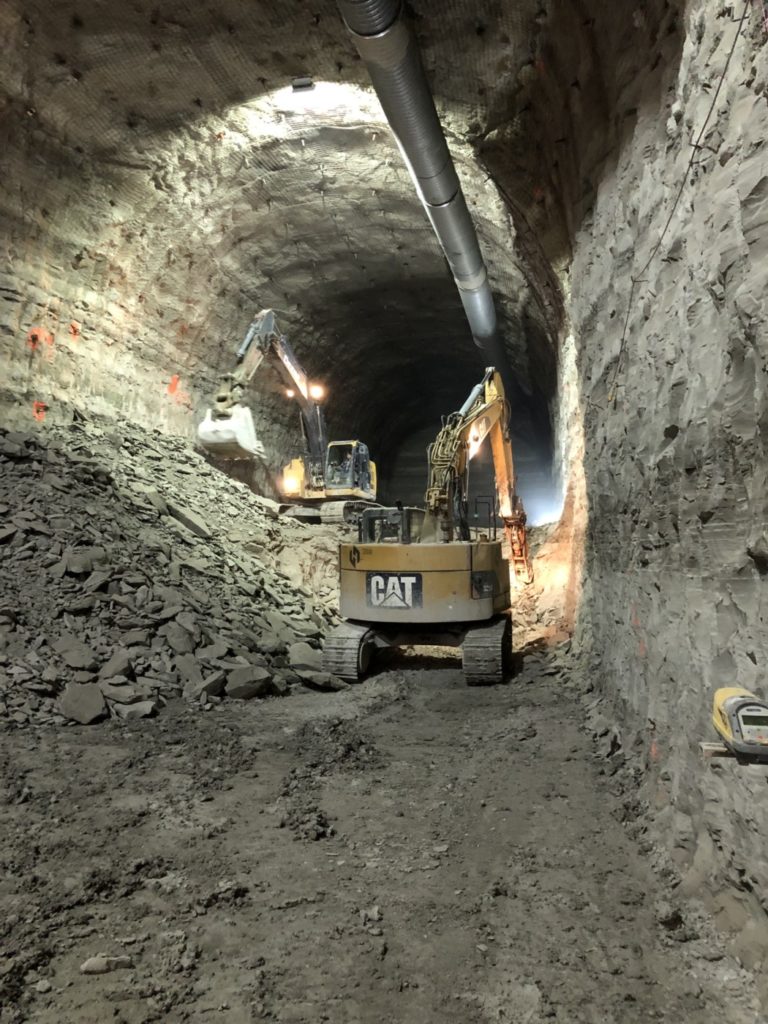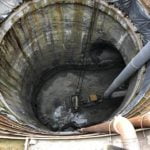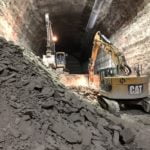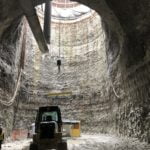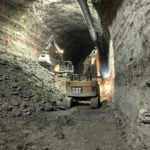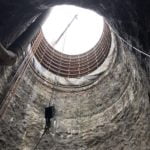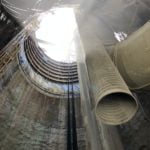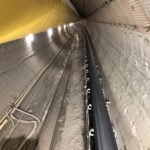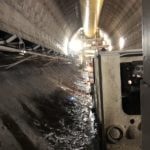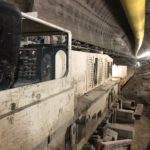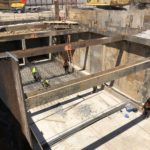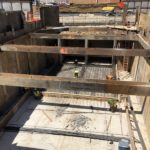The Mill Creek Drainage Relief Tunnel is a construction project that will bring needed infrastructure improvement to east Dallas, Texas. It will include 26,385 linear feet of tunneling at a 30-foot finished diameter with eight intake shafts and six lateral tunnels excavated by roadheader or excavators/breakers. The tunnel is being driven through Austin chalk by a Main Beam Robbins tunnel boring machine (TBM).
Stiver Engineering provided construction engineering services for the contractor prior to and during the tunnel construction. Our services included several trench safety plan designs, a sound wall design using steel soldier piles and acoustic panels, and a removable shaft cover and rigging details for several liner plate shafts. We also created a design for attaching the access cage ladder and landings on the ring beams of the liner plate shaft and on the vertical rock face. Other work included traffic control plans and shoring designs for access shafts, shotcrete trolley system for lining the tunnel, concrete collars, steel bulkheads, supporting existing utility lines, and a starter tunnel/gripper wall for the TBM.
The tunnel, which stretches from the State-Thomas District in Uptown Dallas, through Mill Creek and Peaks Branch, will be constructed mostly underground with little impact to neighborhoods. Once complete, the approximately 5-mile-long tunnel will sit 70 to 100 feet below ground to provide flood relief.
The Mill Creek Drainage Relief Tunnel is a five-mile underground tunnel that will provide 100- year flood protection for nearly 6,000 commercial and residential properties in the east Dallas area, including Baylor Medical Center. The current drainage system in these areas was constructed 50 to 70 years ago, and only provides a two- to five-year flood protection. Major flooding that occurred in 1995, 2003, 2006 and 2009 crippled these areas and showed dire need for the construction of this drainage relief tunnel. The Mill Creek/Peaks Branch/State-Thomas Drainage Relief Tunnel will improve stormwater management resulting in saved lives, protection of schools, medical facilities, residents and streets. Prior to construction beginning, a TBM will be constructed on site. By using a TBM, there will be minimal utility relocation, as well as minimal street and traffic impacts. Once complete, the tunnel will be approximately 30 feet in diameter, and will be designed to carry a maximum flow of nine million gallons per minute. This provides exponential relief of flooding during large rain events. The tunnel will have six intake sites along the alignment. These include:
- Woodall Rodgers Intake – Intersection of Woodall Rodgers Freeway and Maple-Routh Connection
- Mill Creek Intake – Intersection of San Jacinto Street and Apple Street
- Peaks Branch Intake – Intersection of North Carroll Avenue and Victor Street
- Peaks Branch 2 Intake – Intersection of E R L Thornton Freeway (I-30) and South Hill Avenue
- East Peaks Branch Intake – Intersection of Bank Street and Herndon Drive
- Outfall – White Rock Creek at Barber Avenue

